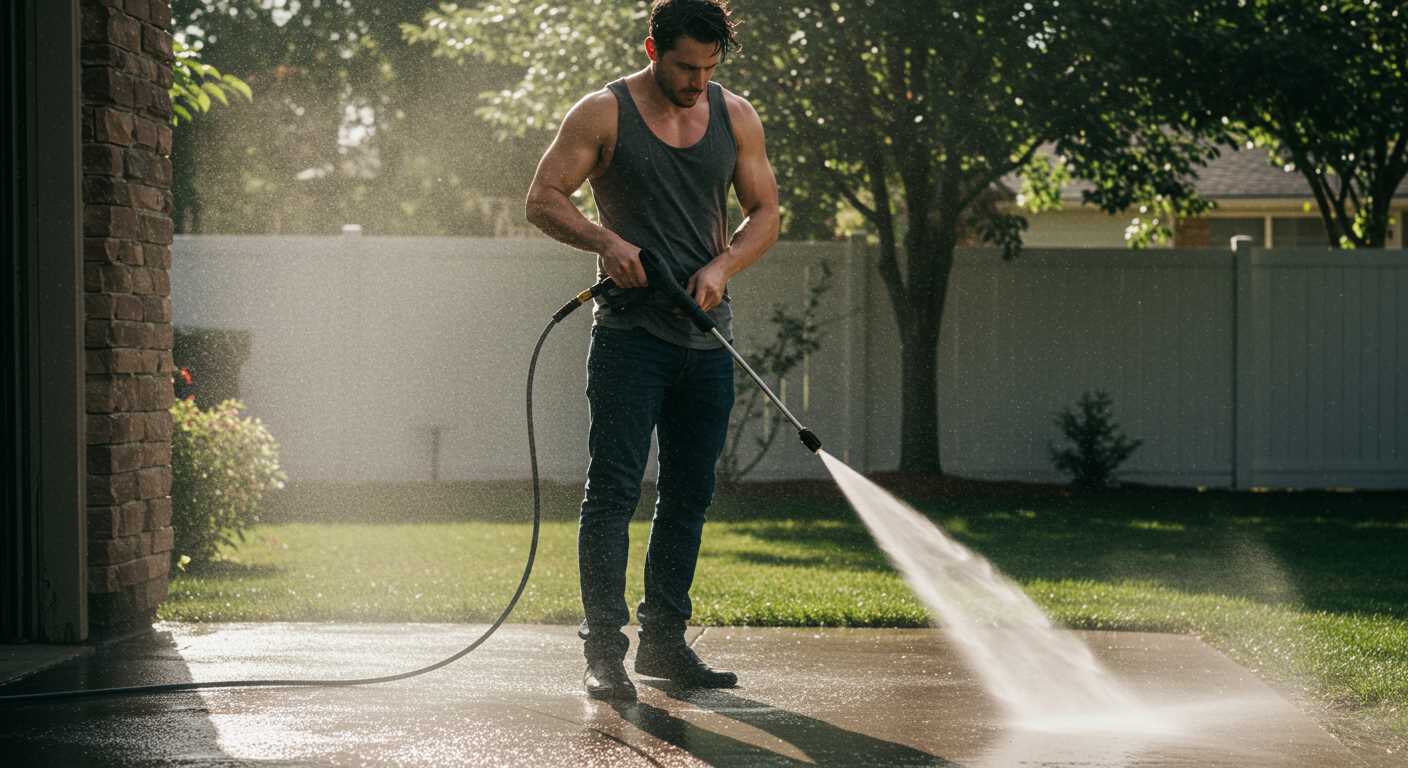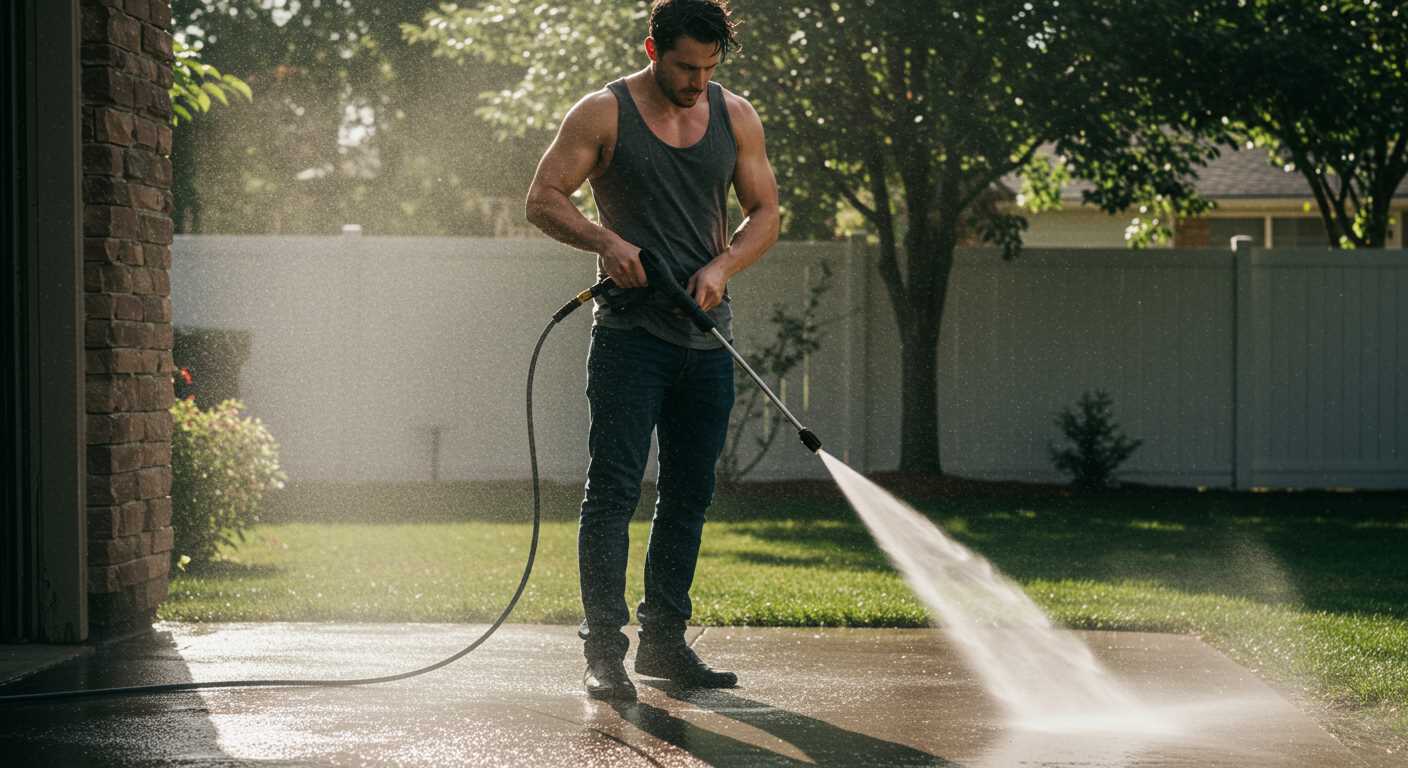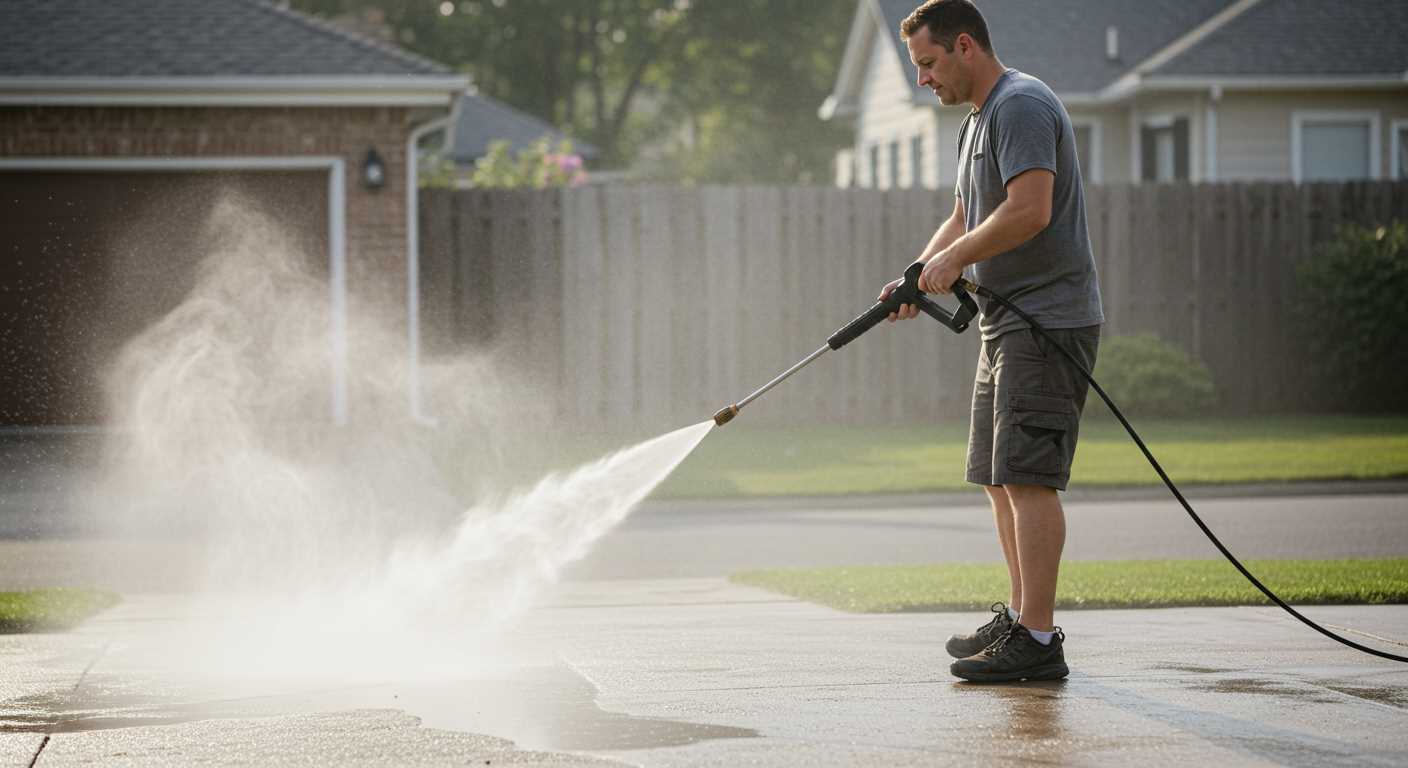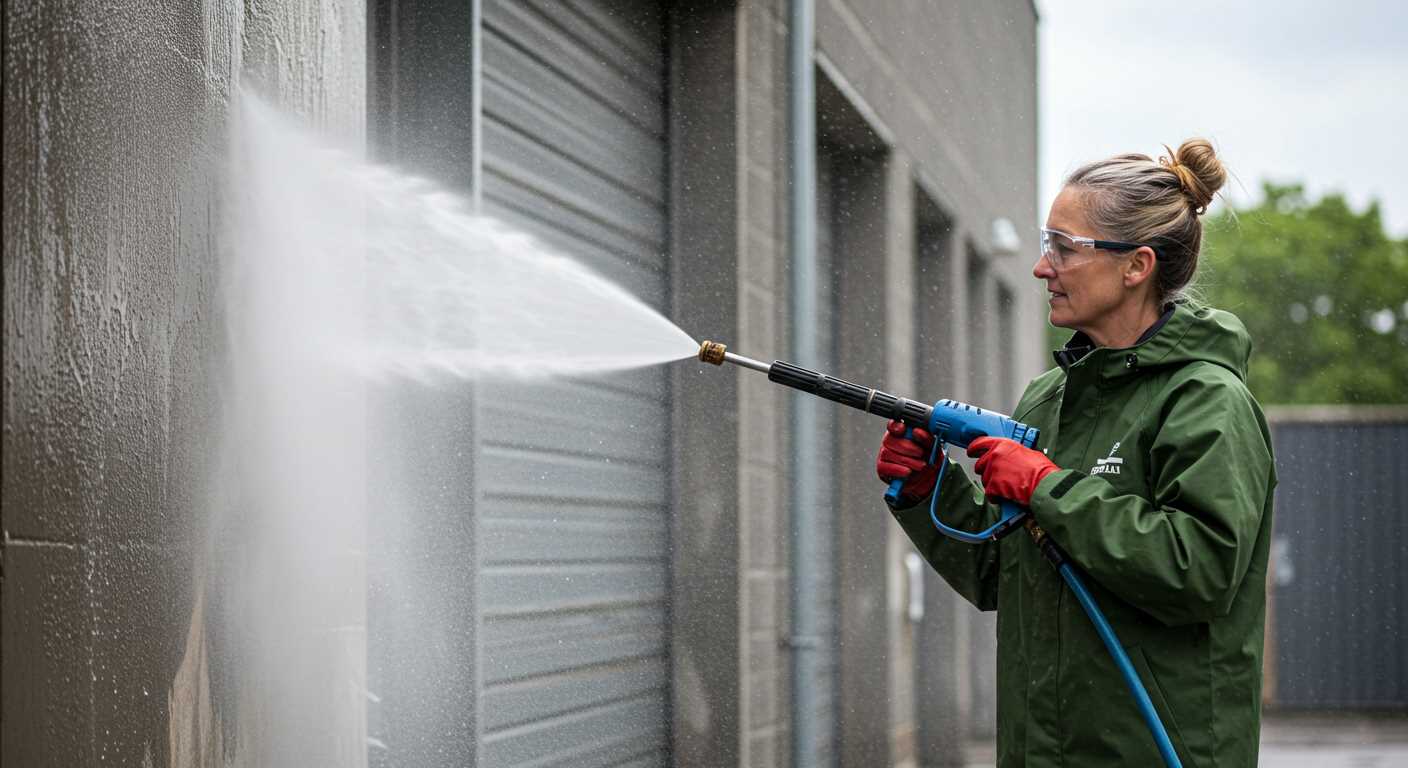




For a thorough clean-up of your masonry surfaces, a combination of chemical strippers and manual scrubbing can yield excellent results. Begin by applying a quality gel-based stripper, ensuring it adheres well to the surface. This type of product tends to cling more effectively, allowing for deeper penetration. Allow the solution to sit for the recommended time specified by the manufacturer, typically around 15 to 30 minutes. During this period, it will break down the unwanted coating.
Once the waiting period is over, utilise a stiff-bristle brush to scrub the surface. Pay special attention to grooves and crevices where residue may linger. For tougher spots, a plastic scraper can help lift the softened material without damaging the underlying masonry. Frequent rinsing of your brush in clean water will aid in maintaining its effectiveness.
In cases where remnants remain stubborn, repeat the process as necessary. After achieving a satisfactory level of cleanliness, rinse the surface thoroughly with clean water to remove any remaining chemicals. This step is crucial not only for aesthetic purposes but also to prepare the surface for any future applications.
Always remember to wear appropriate protective gear, including gloves and eye protection, when handling chemical products. Ventilation is equally important; consider working outdoors or in a well-ventilated area to avoid inhaling fumes. Taking these precautions ensures safety while achieving a pristine finish on your masonry surfaces.
Techniques for Stripping Coatings from Masonry Surfaces
Use a chemical stripper specifically designed for stone surfaces. Apply it with a brush, ensuring even coverage, and allow it to sit according to the manufacturer’s instructions. This method can effectively break down stubborn layers, making removal simpler.
For less aggressive options, try a mixture of vinegar and water. Spray or sponge it onto the surface, allowing it to penetrate. The acidity helps lift residues, making scraping easier.
Incorporate a scrub brush with stiff bristles to assist in dislodging particles. Work in sections, applying pressure and using a back-and-forth motion to tackle tougher spots. This method requires patience but can yield excellent results.
Consider using a heat gun to soften the coating. Hold the gun several inches away from the surface to avoid damage. Once the material begins to bubble, scrape it off carefully with a putty knife.
For larger areas, soaking rags in a solvent like acetone can be effective. Place the rags on the surface and cover them with plastic to prevent evaporation. After a few hours, remove the rags and wipe the area clean.
Finish with a thorough rinse using a garden hose to clear away any remnants of products used. Ensure all chemicals are neutralised, as any residue can affect future treatments or finishings.
Assessing the Type of Paint on Your Brick Wall
Start by determining whether the coating is latex or oil-based. This distinction impacts the choice of stripping agent and method. To test, apply a small amount of rubbing alcohol on a rag and rub it on the surface. If the coating comes off, it’s likely latex; if not, it’s oil-based.
Next, check for the presence of multiple layers. Older surfaces may have accumulated years of different coatings. Gently scrape a small area to expose the underlying layers. This will help you understand the thickness and condition of the surface.
Consider the texture of the substrate. If the masonry is rough, it may hold onto the finish more tenaciously. A smooth surface may allow for easier application of solvents or methods that follow. Understanding the texture helps gauge the effort needed for successful treatment.
| Type of Coating | Testing Method | Indicators |
|---|---|---|
| Latex | Rubbing alcohol on cloth | Coating comes off easily |
| Oil-based | Rubbing alcohol on cloth | No transfer of coating |
| Multiple Layers | Gentle scraping | Visible differences in colour or texture |
| Rough Surface | Visual inspection | More texture, harder to strip |
| Smooth Surface | Visual inspection | Less texture, easier treatment |
Lastly, assess any damage to the underlying structure. Look for cracks or spalling, which may complicate the removal process. Addressing these issues beforehand can save time and effort during the cleaning process.
Gathering Necessary Tools and Materials
Start by collecting a few key items for your task. You’ll need a sturdy scraper or putty knife to tackle tough spots. A wire brush is also beneficial for loosening stubborn layers. Invest in a chemical stripper suitable for masonry surfaces; these are designed to penetrate and lift coatings effectively.
Protective Gear
Don’t overlook safety. Equip yourself with gloves to protect your hands and goggles to shield your eyes from splashes. A mask is advisable if you’re working with harsh chemicals to avoid inhalation of fumes.
Cleaning Solutions
Consider using a vinegar solution or a mixture of baking soda and water as eco-friendly alternatives for gentle cleaning. For tougher residues, a commercial masonry cleaner can help. Always test any solution on a small, inconspicuous area first to ensure compatibility with your surface. If you’re looking for more intensive cleaning, you might want to explore my guide to finding the highest rated pressure cleaner pumps for potential options.
Additionally, if the task feels too daunting, you might find that a well-rated foam cannon can make a difference. Check out the best car wash pressure washer nozzle foam cannon gun sprayer for insights into tools that can simplify your efforts.
Preparing the Brick Surface for Paint Removal
Begin by clearing the area surrounding the structure. Remove any furniture, plants, or obstacles that might hinder access to the surface. Ensuring a clear workspace not only protects your belongings but also creates a safer environment for the task ahead.
Next, inspect the surface thoroughly. Look for loose debris, dust, or any flaking material that may interfere with the cleaning process. A stiff-bristled brush works wonders here; use it to scrub away any accumulated dirt or grime. This step is crucial as it allows the stripping agent to penetrate better.
Consider the weather conditions before proceeding. A dry day is ideal, as moisture can dilute your chosen removal agent, reducing its effectiveness. If the humidity is high, it might be wise to postpone the project until the air is drier.
Once the surface is clean and dry, apply a protective sealant to areas that won’t require treatment. This shield will prevent any unintended damage to neighbouring surfaces during the application of your removal technique.
Lastly, wear appropriate protective gear. Safety goggles, gloves, and a mask are essential to shield yourself from fumes and particles during the process. Your safety should always be a priority, so don’t skip this important step.
Applying Paint Stripper or Solvent Safely
Always protect yourself before engaging in any stripping process. Don appropriate gear, including gloves, goggles, and a mask to shield against fumes. Ventilation is key; open windows or use fans to circulate air in the workspace.
- Test the stripper on a small, inconspicuous area. This helps gauge its effectiveness and ensures compatibility with the surface.
- Follow the manufacturer’s instructions carefully. Each product has specific guidelines on application thickness and dwell time.
- Apply the solution evenly using a brush. Avoid oversaturation, which can lead to excessive runoff and damage the substrate.
Monitor the reaction closely. Depending on the type of coating, you may notice bubbling or peeling. This indicates that the chemical is working effectively. If you don’t see any reaction after the recommended time, it might be necessary to reapply or select a different product.
- Use a scraper or putty knife to gently lift off the loosened material. Work in small sections to maintain control and minimise mess.
- Keep a damp cloth handy to wipe away residues as you go. This aids in maintaining a clean working area and helps prevent the solution from drying out.
- Dispose of any waste material according to local regulations. Many solvents are considered hazardous and should be handled properly to avoid environmental harm.
After the application is complete, rinse the surface thoroughly with clean water to eliminate any remaining chemicals. This step is vital to ensure no residue lingers, which could affect any future treatments or finishes.
Finally, allow the surface to dry completely before proceeding with any further refinishing or sealing. This guarantees optimal adhesion and durability of any new coatings.
Using Scrapers and Brushes for Effective Removal
For tackling stubborn coatings on your masonry, a combination of scrapers and brushes is often your best bet. Start with a sturdy scraper; a putty knife or a flat chisel can work wonders. Hold it at a slight angle and apply firm pressure to lift the coating away. Be cautious not to gouge the surface underneath.
Next, switch to a stiff-bristled brush. A wire brush can be particularly useful for getting into the textured crevices of the stone. Use it in circular motions to dislodge any remaining bits. This method does require some elbow grease, but it’s highly effective when done correctly.
For those tricky spots, consider using a scraper with a wider blade. This allows for greater surface area contact, making it easier to peel back layers. Ensure you work in manageable sections to keep track of your progress and avoid overwhelming yourself.
In my experience, maintaining a consistent rhythm while scraping and brushing can increase efficiency. Take breaks to assess your progress and adjust your technique if needed. This approach not only helps with fatigue but also ensures you don’t miss any spots.
After the bulk of the coating has been lifted, a final pass with a brush will help to smooth the surface and prepare it for any finishing touches. Always follow up with a thorough cleaning to remove any debris left behind, ensuring a clean slate for your next project.
Cleaning and Restoring the Brick After Paint Removal
Once the unwanted coating has been eliminated, the next step is to restore the surface. Start by rinsing the exposed masonry with clean water to remove any remaining residue from the stripping agents. Using a garden hose equipped with a spray nozzle can help control the water flow and prevent damage.
After rinsing, inspect the surface for any stubborn stains or discolouration. For tougher marks, consider employing a mixture of warm water and mild detergent. A soft-bristle brush can be useful for scrubbing; avoid hard bristles that may scratch the surface. Rinse thoroughly to ensure no soap remains.
If the surface still shows signs of previous coatings, a gentle acidic solution, like vinegar diluted with water, can be applied. This method works effectively for mineral-based stains. Always test this solution on a small, inconspicuous area first to confirm it won’t harm the masonry.
Once clean, allow the bricks to dry completely. This is a crucial phase as it prevents moisture from being trapped beneath any protective treatments you may apply later. Depending on the weather, this could take several hours to a full day.
After drying, consider sealing the surface to protect it from future stains and to enhance its appearance. A breathable masonry sealant will help maintain the integrity of the bricks while providing a layer of defence against the elements. Apply according to the manufacturer’s instructions for the best results.
Finally, consider adding a touch of colour back to the masonry by using a breathable masonry paint if desired. This can help rejuvenate the overall look of the structure while allowing the bricks to breathe.








.jpg)


